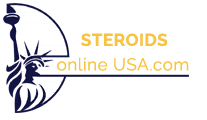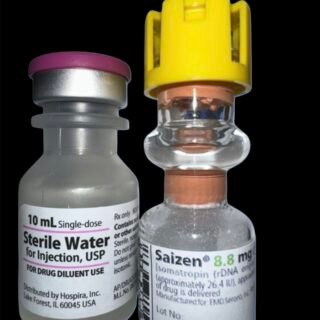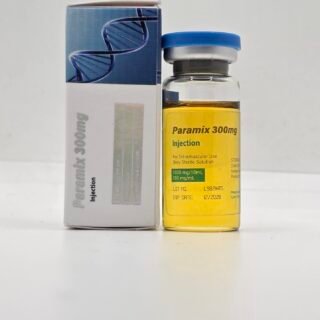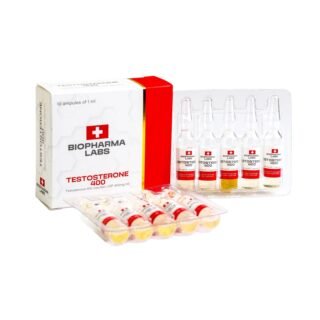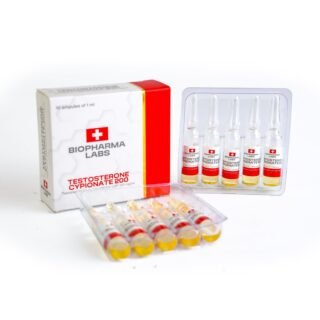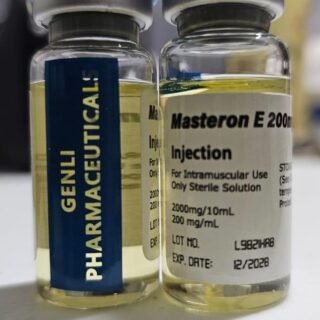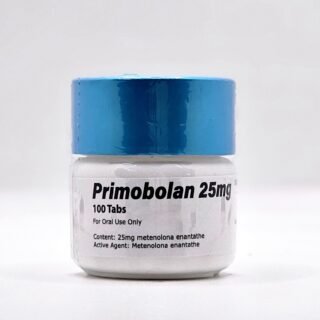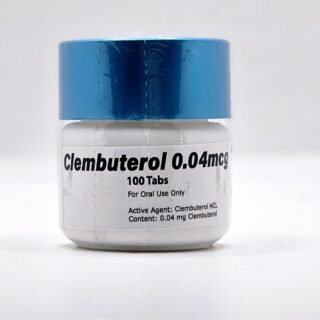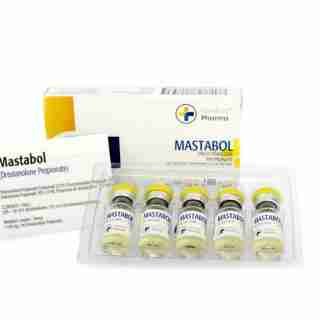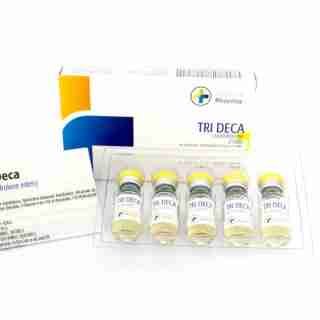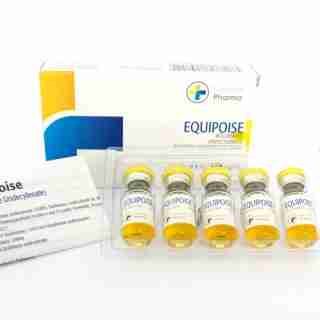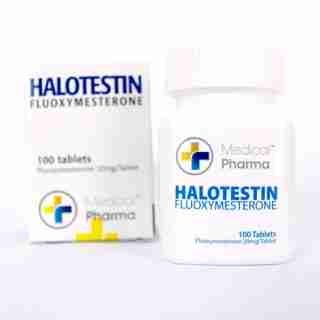Category
- Best Peptides for muscle growth
- Geno Pharma Domestic Warehouse 2 (Canada&USA)
- GP(Domestic Shipping US) Warehouse 1
- Human Pharma Premium
- Phar Labs Premium-Select
- Steroids on Sale USA, Real Steroids Online
- New arrivals in USA
- Most popular steroids in USA
- Antiestrogens / Gonadotropins
- Bangkok Steroid USA
- Biopharma Steroid USA
- British Dragon
- Anabolic Steroids for Horses
- Fat-burners
- Gen Pharma USA
- Medical Pharma Steroid USA
- Medical Tech Steroid USA
- Novocrine Steroids
- HGH USA
- Omega Labs Steroid USA
- Rotterdam Steroids USA
- SARMs USA
- Sciroxx
- Sydgroup Steroid USA
- Big vetenary Steroid USA
- Watson Steroids
- XT Labs Steroids
Most Popular steroids USA
-
 Saizen 8.8 mg (Somatropin) 26.4 UI Domestic USA
Saizen 8.8 mg (Somatropin) 26.4 UI Domestic USA
$115.00Original price was: $115.00.$98.00Current price is: $98.00. -
 PARAMIX 300 Genli Pharma – Trenbolone A, E & Hexa Mix 10 ml
PARAMIX 300 Genli Pharma – Trenbolone A, E & Hexa Mix 10 ml
$110.00Original price was: $110.00.$99.00Current price is: $99.00. -
 Testosterone 400 Biopharma 10 Ampoules
Testosterone 400 Biopharma 10 Ampoules
$99.00Original price was: $99.00.$75.00Current price is: $75.00. -
 Testosterone Cypionate 200 Biopharma 10 amp
Testosterone Cypionate 200 Biopharma 10 amp
$99.00Original price was: $99.00.$72.00Current price is: $72.00. -
 Drostanolone Enanthate 200mg 10 ml - Masteron Enanthate
Drostanolone Enanthate 200mg 10 ml - Masteron Enanthate
$110.00Original price was: $110.00.$90.00Current price is: $90.00. -
 Primobolan Pills 25mg 100 pills Domestic USA
Primobolan Pills 25mg 100 pills Domestic USA
$99.00Original price was: $99.00.$85.00Current price is: $85.00. -
 Clenbuterol for Sale 40mcg 100 Tabs - GP Premium Domestic USA
Clenbuterol for Sale 40mcg 100 Tabs - GP Premium Domestic USA
$99.00Original price was: $99.00.$65.00Current price is: $65.00.

Testosterone Cypionate 200mg 10 amp – Medical Tech
$79.00
Testosterone is readily aromatized in the body to estradiol (estrogen). Elevated estrogen levels can cause side effects such as increased water retention, body fat gain, and gynecomastia. Elevated levels of testosterone are likely to produce androgenic side effects including oily skin, acne, and body/facial hair growth. Men with a genetic predisposition for hair loss (androgenetic alopecia) may notice accelerated male pattern balding. Anabolic/androgenic steroids can have deleterious effects on serum cholesterol. This includes a tendency to reduce HDL (good) cholesterol values and increase LDL (bad) cholesterol values, which may shift the HDL to LDL balance in a direction that favors greater risk of arteriosclerosis.
Share this page:
- Click to share on X (Opens in new window) X
- Click to share on Facebook (Opens in new window) Facebook
- Click to email a link to a friend (Opens in new window) Email
- Click to share on LinkedIn (Opens in new window) LinkedIn
- Click to share on Reddit (Opens in new window) Reddit
- Click to share on Pinterest (Opens in new window) Pinterest
- Click to share on Telegram (Opens in new window) Telegram
- Click to share on WhatsApp (Opens in new window) WhatsApp
- Click to share on Tumblr (Opens in new window) Tumblr
What Is Testosterone Cypionate 200mg?
Testosterone Cypionate 200mg is a long-acting, oil-based injectable form of testosterone commonly prescribed for adult males diagnosed with low testosterone levels(1) (hypogonadism) increasing with age(5), symptoms of hypogonadism typically involve low energy levels, reduced sex drive, difficulty achieving or maintaining erections, and emotional changes such as irritability or depression(6). Testosterone Cypionate is one of the most widely used esters in Testosterone Replacement Therapy (TRT)(9) due to its prolonged half-life and consistent hormonal release, allowing for weekly or bi-weekly injections to maintain stable testosterone levels in the blood.
Unlike fast-acting esters like testosterone propionate, cy pionate provides smoother hormonal peaks and fewer injection frequencies, making it ideal for long-term treatment plans.
Testosterone Cypionate Structure and Ester Profile

Testosterone Cypionate Half Life
Testosterone Cypionate is a synthetic derivative of endogenous testosterone with the cypionate ester attached at the 17-beta hydroxyl group. This esterification significantly prolongs the molecule’s release profile, making it ideal for Testosterone Replacement Therapy (TRT) due to its slower absorption and extended half-life.
📘 Chemical Properties
Chemical Name: 17β-hydroxyandrost-4-en-3-one 17-cyclopentylpropionate
Molecular Formula: C₂₇H₄₀O₃
Molecular Weight: 412.61 g/mol
CAS Number: 58-20-8
Structure Type: Androstane backbone with ester linkage at the 17-beta position
This lipophilic ester dissolves in oil-based solutions and is slowly hydrolyzed by esterases in muscle tissue, releasing free testosterone into circulation over time.
⏳ Pharmacokinetics of Testosterone Cypionate
| Parameter | Testosterone Cypionate |
|---|---|
| Onset of Action | 24–48 hours post-injection |
| Peak Serum Levels | 48–72 hours |
| Half-life (IM route) | ~8 days |
| Effective Duration | 7–10 days |
| Injection Frequency | Weekly or biweekly |
Its slow enzymatic breakdown allows for fewer injections compared to faster esters, while providing a more stable hormonal environment.
🔬 How It Compares to Other Testosterone Esters
| Ester | Half-Life (Approx.) | Onset | Common Use |
|---|---|---|---|
| Propionate | ~2 days | Fast (within 24h) | Cutting cycles, short protocols |
| Enanthate | ~5–6 days | Moderate | TRT, muscle gain protocols |
| Cypionate | ~8 days | Moderate–Slow | TRT (U.S. preferred) |
| Undecanoate (IM) | ~20.9 days | Very slow | Long-term TRT (monthly shots) |
| Sustanon 250 | Mixed (1.5–21 days) | Phasic | Blended ester TRT |
🧠 Clinical Note: Cypionate is nearly identical to Enanthate in structure and function, differing only by one carbon atom in the ester chain. However, in the U.S. market, Cypionate is preferred and more commonly prescribed in TRT protocols.
This molecular and pharmacokinetic profile makes Testosterone Cypionate one of the most stable, predictable, and versatile esters for testosterone delivery, especially when consistent serum levels and ease of administration are clinical priorities.
🧬 How Testosterone Cypionate 200mg Works in the Body

Once administered intramuscularly—typically into the gluteal muscle—Testosterone Cypionate is slowly absorbed and enzymatically cleaved by esterases, releasing free testosterone into the bloodstream. This active testosterone binds to androgen receptors (AR) located throughout the body, including:
Skeletal muscles
Bones
Skin and hair follicles
Prostate and reproductive organs
Brain and central nervous system
Red blood cell-producing bone marrow
When testosterone binds to these receptors, it activates androgen-responsive genes, leading to the following physiological effects:
📈 Increased protein synthesis and lean muscle mass
🔥 Reduction in fat mass and improved metabolic rate
💪 Enhanced strength and energy levels
🧠 Improved mood, cognitive sharpness, and libido
❤️ Support for cardiovascular function and erythropoiesis (red blood cell production)
🍆 Maintenance of sexual function and fertility (in specific protocols)
Additionally, some of the circulating testosterone is converted into DHT (dihydrotestosterone) by the 5α-reductase enzyme, which is responsible for stronger androgenic effects such as facial hair growth, deepening of the voice, and prostate stimulation.
Another fraction is aromatized into estradiol, an estrogenic hormone that plays a critical role in:
Bone density preservation
Libido regulation
Emotional stability
Because of these conversions, proper dosing and regular blood monitoring (testosterone, estradiol, DHT, hematocrit, PSA, liver enzymes) are essential to avoid side effects and ensure therapeutic success.
💊 Brand Names and Pharmaceutical Classifications
Testosterone Cypionate is available in both branded and generic forms. It is sold under different labels depending on the country, manufacturer, and dosage concentration, but the compound remains pharmacologically identical.
💡 Common Brand Names:
Depo-Testosterone® – the original brand name (Pfizer/Pharmacia)
Test C 200 – generic label used by various compound pharmacies
Cypionate 200 / Test Cyp 200mg – common nomenclature in bodybuilding and TRT circles
Rotterdam Pharma®, Gen-Pharma®, Medical Tech ® – international laboratory names offering high-quality versions
📚 Drug Classifications:
Pharmacologic Class: Synthetic Androgen / Anabolic Steroid
Therapeutic Class: Androgen Replacement Therapy
Controlled Substance: Schedule III (U.S. DEA classification due to potential for misuse and dependence)
Route of Administration: Intramuscular injection (IM)
Formulations Available:
100mg/mL (multi-dose vial)
200mg/mL (multi-dose vial)
250mg/mL (compounded formulations)
Approved Medical Conditions (e.g., Hypogonadism)

The FDA-approved indication for Testosterone Cypionate is male hypogonadism, a clinical syndrome characterized by low serum testosterone levels in conjunction with specific signs and symptoms.
🔬 Primary Hypogonadism (Testicular Origin)
This refers to testicular failure to produce adequate testosterone despite normal or elevated levels of luteinizing hormone (LH) and follicle-stimulating hormone (FSH). Common causes include:
Klinefelter syndrome (47,XXY)
Testicular trauma or radiation
Chemotherapy-induced gonadotoxicity
Orchitis (often viral, such as mumps)
In these cases, testosterone levels are persistently low, and replacement is not just beneficial—it’s necessary to prevent systemic consequences such as:
Decreased bone mineral density
Anemia due to reduced erythropoietin stimulation
Sarcopenia and reduced lean mass
Erectile dysfunction and low libido
Cognitive dullness, fatigue, and depressive symptoms
🔬 Secondary Hypogonadism (Pituitary or Hypothalamic Origin)
Here, the dysfunction lies in gonadotropin release, often due to:
Pituitary tumors (e.g., prolactinoma)
Chronic opioid use (e.g., methadone, hydrocodone)
Severe obesity or metabolic syndrome
Anabolic steroid withdrawal
Testosterone Cypionate, when administered appropriately, can help these men recover normal hormonal function, although in younger patients desiring fertility, alternative strategies like hCG and clomiphene citrate may be considered first.
📌 Clinical Criteria for TRT Initiation
According to endocrine society guidelines, TRT is indicated when:
Total testosterone is consistently <300 ng/dL in morning serum samples (on at least 2 occasions)
AND symptoms such as fatigue, low libido, erectile dysfunction, poor concentration, or depressive mood are present
Off-Label Uses and Benefits
Though off-label prescribing requires greater discretion, Testosterone Cypionate has been used in several clinical scenarios beyond FDA labeling. These uses are typically evidence-informed and may be supported by observational studies, smaller trials, or endocrinologist consensus.
🧠 Gender-Affirming Hormone Therapy (GAHT)
One of the most rapidly growing off-label uses is in transgender men (female-to-male, FTM) as part of gender-affirming therapy. Here, testosterone cypionate is used to induce and maintain masculinizing secondary sex characteristics, such as:
Deepening of the voice
Cessation of menses
Facial and body hair growth
Increased muscle mass and redistribution of body fat
Dosing may vary from 50mg to 200mg weekly, and patients are monitored for hemoglobin, hematocrit(4), liver function, and lipid profile as with any TRT protocol. Clinical endocrinology societies (e.g., WPATH) recognize this as a valid and medically supported use, though it remains technically off-label in most regulatory frameworks.
🏥 Cachexia and Muscle Wasting Disorders
In select patients with chronic illness-associated muscle wasting—such as advanced HIV, COPD, or cancer—testosterone has been shown to preserve lean body mass, improve nitrogen balance, and potentially enhance physical function and quality of life. Testosterone cypionate has a more predictable pharmacokinetic profile than oral agents, and in these cases, can be part of an anabolic strategy along with nutrition and resistance training.
🧪 Experimental Use in Age-Related Testosterone Decline
Sometimes referred to as “andropause,” this condition is still controversial. While some aging men exhibit testosterone levels below normal with vague symptoms (tiredness, weight gain, erectile difficulty), there is no universal consensus on treating age-related testosterone decline without clear hypogonadism criteria.
Nonetheless, clinicians may cautiously trial testosterone cypionate under close monitoring if:
Total T < 350 ng/dL
Symptom burden is significant
Cardiovascular risk is acceptable
Informed consent is obtained
⚕️ Depression and Cognitive Decline (Emerging Research)
In select studies, low testosterone levels have been associated with treatment-resistant depression and mild cognitive impairment. While still experimental, some psychiatrists in integrative or functional medicine settings may incorporate TRT into broader treatment plans for male patients unresponsive to SSRI/SNRI therapy.
⚠️ Performance Enhancement and Bodybuilding (Not Medically Approved)
It’s crucial to clarify that while testosterone cypionate is widely used in the fitness and bodybuilding communities for muscle gain, fat loss, and recovery, this is not a medically sanctioned indication and carries legal and health risks. Use for athletic enhancement is associated with:
HPTA suppression and infertility
Aggressive behavior and mood swings
Polycythemia and cardiovascular strain
Legal consequences under WADA and DEA regulations
In summary, Testosterone Cypionate 200mg is a clinically essential medication when used in the right context. Its benefits go far beyond aesthetics—restoring metabolic, sexual, mental, and physical health in those truly deficient in testosterone. However, appropriate diagnosis, therapeutic oversight, and long-term monitoring are indispensable to maximize benefits and minimize harm.
🏋️♂️ Example Testosterone Cypionate Cycle for Performance (Educational Purpose Only)
Although not medically approved, many athletes and bodybuilders turn to Testosterone Cypionate for performance enhancement. Below is a commonly referenced example of a basic cycle structure shared across educational forums and anecdotal sources. This is not a medical recommendation, but an informational breakdown meant to clarify public usage patterns for those researching potential effects.
🔄 Cycle Outline
| Phase | Duration | Dosage | Purpose |
|---|---|---|---|
| Testosterone Cypionate | Weeks 1–10 | 200–400mg per week (split into 2 doses) | Muscle mass gain, strength improvement, recovery support |
| Off-Cycle | Weeks 11–12 | No injections | Hormonal clearance, preparation for PCT |
| Post-Cycle Therapy (PCT) | Weeks 13–16 | Tamoxifen 20mg/day + hCG 500 IU 2–3x/week | HPTA reactivation, restore natural testosterone |
💡 Key Notes
Injections are typically split into Monday–Thursday or Tuesday–Friday to stabilize hormone levels and reduce fluctuations.
hCG (human chorionic gonadotropin) supports testicular function during the early post-cycle phase.
Tamoxifen helps mitigate rebound estrogen and restart natural testosterone production.
Bloodwork should ideally be performed before, during, and after the cycle to monitor liver enzymes, hematocrit, lipid profile, and hormonal values.
⚠️ Legal and Medical Disclaimer
This cycle format is provided solely for educational and search intent purposes. Testosterone Cypionate is a controlled substance in many countries, and its use without medical supervision can lead to serious health risks including infertility, cardiovascular strain, and endocrine disruption. Always consult a licensed physician before considering any hormone-based intervention.
Testosterone Cypionate 200mg Dosage, Administration, and Effectiveness

Administering Testosterone Cypionate 200mg properly is crucial to the success of any Testosterone Replacement Therapy (TRT) protocol. The goal of TRT is not only to normalize serum testosterone levels but to relieve clinical symptoms, improve physiological function, and maintain safety over the long term.
Each patient is different—age, baseline hormone levels, comorbidities, and metabolic factors all influence dosage and frequency. Therefore, personalization and ongoing monitoring are essential.
📏 Typical Dosage Guidelines for TRT (Testosterone Replacement Therapy)
The starting point for testosterone cypionate therapy depends on the severity of the deficiency and the individual’s clinical goals. Guidelines from the Endocrine Society and AACE (American Association of Clinical Endocrinologists) suggest the following:
🩺 Standard Initial Dose:
100 mg to 200 mg of Testosterone Cypionate intramuscularly (IM) every 7 to 14 days
This range allows flexibility in adjusting serum levels while observing symptom resolution. The key is to mimic physiological testosterone production as closely as possible—avoiding extreme highs (which may cause irritability or erythrocytosis) and extreme lows (which can lead to fatigue or sexual dysfunction).
📈 Dose Adjustment Based on Labs and Symptoms:
Monitoring should be conducted at 6–8 weeks after therapy begins and regularly thereafter.
If testosterone is too high (>1000 ng/dL): Reduce the dose or extend the interval
If testosterone is too low (<400 ng/dL): Increase dose or shorten interval
If estradiol rises excessively (e.g., gynecomastia): Consider aromatase inhibitor or lowering dose
Hematocrit >54%: Pause or reduce dosage due to thrombotic risk
💡 Important Lab Targets:
Total testosterone: 550–900 ng/dL
Free testosterone: 15–25 pg/mL
Estradiol (E2): <40 pg/mL (in men)
Hematocrit: <52% ideal, >54% is typically a red flag
PSA (Prostate Specific Antigen): Monitored especially in older patients
💉 Injection Frequency and Techniques
Testosterone Cypionate has a half-life of approximately 8 days, which is why it is commonly dosed:
Weekly (Every 7 Days): 100–125 mg for smoother levels
Biweekly (Every 10–14 Days): 150–200 mg for convenience, though some experience hormonal fluctuations
📍 Injection Sites and Methods:
| Route | Description |
|---|---|
| Intramuscular (IM) | Most common; injected into the gluteus medius (upper outer quadrant of the buttock). Provides steady release into systemic circulation. |
| Subcutaneous (SubQ) | An increasingly popular alternative. Injected into abdominal fat using an insulin syringe. Absorption is slightly slower but effective, and often less painful. |
🧪 Needle Size and Equipment:
| Type | Recommended Size |
|---|---|
| Syringe | 1 mL to 3 mL |
| Needle for IM | 22G to 25G, 1 to 1.5 inches long |
| Needle for SubQ | 27G to 29G, ½ inch |
Tips for Administration:
Warm the vial slightly in your hand before drawing; this reduces viscosity and eases injection
Always aspirate to avoid intravascular injection (IM only)
Rotate injection sites to prevent tissue damage
Use alcohol pads and sterile technique to minimize infection risk
⏱️ How Long Does Testosterone Cypionate 200mg Take to Work?
While biochemical levels begin to change shortly after administration, the clinical effects of testosterone unfold over a staged timeline. Below is a realistic, evidence-based overview of what to expect:
🗓️ Week-by-Week Timeline of Benefits:

Although the effects vary individually, here’s a timeline showing when most patients begin to notice specific improvements.
| Time Frame | Expected Effects |
|---|---|
| Within 3–5 days | Initial improvement in energy, subtle lift in mood, improved sleep |
| 1–2 weeks | Increased libido, early signs of mental clarity, reduction in irritability |
| 3–6 weeks | Improved erectile function, slight increase in muscle strength |
| 6–8 weeks | Enhanced muscle mass, reduced waist circumference, increased motivation |
| 8–12 weeks | Stabilization of hormone levels, measurable changes in body composition |
| 3–6 months | Notable gains in bone density, hematologic markers, and overall vitality |
| 6–12 months | Long-term benefits: metabolic improvement, emotional stability, better endurance and sexual satisfaction |
⏳ Important: Response speed varies. Obese patients or those with insulin resistance may require more time to experience full benefits.
Testosterone Cypionate Side Effects and Health Considerations

Testosterone Cypionate 200mg, although generally considered safe when used under strict medical guidance, can cause various side effects. These effects range from common and mild to rare and severe, making thorough patient monitoring and individualized treatment essential.
Understanding these potential side effects is critical to effectively manage risks and ensure that testosterone therapy achieves its therapeutic goals safely.
✅ Common and Manageable Side Effects
Most users experience mild and manageable side effects, especially during the initial phase of testosterone therapy as the body adapts to hormonal changes. These typically diminish over time or with minor adjustments to treatment.
Frequently Reported Mild Side Effects:
- Acne or Oily Skin: Testosterone increases sebum production, potentially leading to acne outbreaks, particularly on the face, chest, or back.
- Increased Hair Growth: Enhanced androgenic activity can stimulate hair growth on the face and body.
- Water Retention (Edema): Mild swelling in extremities due to fluid retention is common initially.
- Injection Site Reactions: Pain, soreness, redness, or mild bruising at the site of intramuscular injections.
- Increased Libido: Heightened sexual desire and more frequent erections can occur, which, while typically beneficial, might sometimes feel excessive.
- Mood Fluctuations: Initial irritability(3) specially with high dosage, heightened energy levels, or mild restlessness as the body adjusts.
- Fatigue or Headaches: Occasional fatigue or mild headaches can occur in response to dosage changes.
Management Tips:
- Most mild side effects resolve spontaneously within 4–8 weeks.
- Dosage adjustments or minor therapeutic changes (e.g., frequency or route of administration) may be sufficient.
- Regular monitoring of estradiol and dihydrotestosterone (DHT) levels is advisable.
❗ Serious Side Effects and Health Risks
Serious side effects, although infrequent with correct clinical supervision, require vigilant monitoring due to their potentially severe health consequences.
❤️ Cardiovascular Risks
- Polycythemia (High Hematocrit Levels): Testosterone therapy stimulates erythropoiesis, increasing red blood cell mass, which can elevate blood viscosity and increase the risk of thrombosis, heart attack, or stroke.
- Symptoms: Fatigue, headaches, visual disturbances.
- Monitoring: Regular hematocrit checks every 3–6 months.
- Hypertension: Testosterone-induced fluid retention can raise blood pressure.
- Symptoms: Persistent headaches, dizziness, visual changes.
- Management: Blood pressure monitoring and antihypertensive medications if necessary.
- Aggravation of Pre-existing Heart Disease: Patients with heart conditions should be closely monitored as testosterone may exacerbate existing cardiovascular issues.
🧬 Hepatic (Liver) Effects
- While injectable testosterone cypionate has a relatively lower hepatotoxicity risk compared to oral steroids, long-term high-dose use can occasionally increase liver enzyme levels, indicating stress or mild hepatotoxicity.
- Symptoms: Fatigue, abdominal pain, jaundice (yellowing of skin or eyes), dark urine.
- Monitoring: Periodic liver function tests (LFTs) to detect early hepatic strain.
🧠 Neuropsychiatric Effects
- Mood and Behavioral Changes: Excessive or supraphysiological testosterone levels can cause aggression, irritability, insomnia, or emotional instability.
- Monitoring: Regular psychological assessments and dosage adjustments as needed.
- Withdrawal Symptoms: Abrupt discontinuation or inadequate dosage can cause depressive symptoms, anxiety, lethargy, or reduced libido.
🧪 Endocrine and Reproductive Risks
- Gynecomastia: Excessive conversion of testosterone to estradiol (estrogen) can cause enlargement and tenderness of breast tissue.
- Management: Aromatase inhibitors or dosage adjustments.
- Prostate Enlargement (BPH): Testosterone therapy can stimulate prostate tissue growth, causing urinary symptoms.
- Symptoms: Difficulty urinating, increased frequency, nocturia.
- Monitoring: PSA levels and digital rectal exams (DRE) in patients over 40.
- Infertility: Chronic suppression of natural gonadotropins (LH and FSH) due to exogenous testosterone can reduce sperm production, potentially leading to infertility.
- Management: Periodic use of human chorionic gonadotropin (hCG) or periodic cycling off testosterone to preserve fertility.
😴 Sleep Apnea Considerations:
Before starting testosterone replacement therapy (TRT), patients should be evaluated for obstructive sleep apnea (OSA), especially if they report loud snoring or excessive daytime fatigue(7). Tools like the STOP-BANG questionnaire help identify those at risk. If OSA is suspected or confirmed, it must be managed properly, as untreated OSA can cause intermittent low oxygen levels—potentially leading to elevated hematocrit and increasing TRT-related risks.
🧬 Testosterone’s Impact on the Gut Microbiome: A Hidden Side Effect
Emerging research suggests that exogenous testosterone may subtly alter the intestinal microbiome(8), not by drastically changing microbial species, but by shifting key metabolic pathways. A pilot study observed that testosterone therapy increases the abundance of bacterial genes involved in glutamate generation while reducing those that consume it. Since glutamate is a precursor of arginine—a metabolite elevated during testosterone use—this competition may lead to altered nutrient absorption, potentially influencing systemic inflammation, nitrogen balance, and cardiovascular risk markers such as asymmetric dimethylarginine (ADMA) [Harris et al., 2024]. Although these effects are still under investigation, they highlight an unexpected gut-mediated dimension to testosterone’s impact, underscoring the need for a more integrative view of its long-term safety.
⚠️ Additional Considerations for Transgender Men (FTM)
For transgender men undergoing gender-affirming hormone therapy (GAHT), testosterone cypionate is often used to induce masculinization. However, without adequate clinical supervision, some individuals may experience excessive androgenic effects, including severe acne, premature balding (especially with genetic predisposition), heightened irritability, or aggressive behavior. Regular monitoring is essential to maintain hormonal balance and avoid unwanted long-term consequences.
📌 Long-Term Side Effects of Testosterone Replacement Therapy (TRT)
Extended testosterone therapy, even under strict supervision, may result in long-term systemic effects that require ongoing assessment and management.
🔄 Endocrine and Fertility Impact
- Hypothalamic-Pituitary-Testicular Axis (HPTA) Suppression: Prolonged testosterone therapy can suppress natural testosterone production.
- Consequences: Reduced testicular size, diminished sperm count, infertility.
- Management: Consider periodic use of hCG or selective estrogen receptor modulators (SERMs) like clomiphene citrate to maintain testicular function.
🧠 Psychological Long-term Effects
- Dependence on External Testosterone: Psychological dependence or persistent mood changes may occur.
- Symptoms: Reduced motivation, depressive episodes during dose fluctuations.
- Management: Stable dosing schedules and psychological support.
⚠️ Additional Long-term Health Risks
- Benign Prostatic Hyperplasia (BPH) Progression: Long-term testosterone therapy may accelerate prostate growth.
- Sleep Apnea: Testosterone can exacerbate existing obstructive sleep apnea or predispose susceptible individuals to new-onset apnea.
- Symptoms: Snoring, interrupted sleep, daytime fatigue.
- Monitoring: Regular sleep assessments or polysomnography when indicated.
- Male Pattern Baldness (Androgenic Alopecia): Testosterone metabolites (DHT) may accelerate genetic hair loss.
- Management: Topical or oral anti-androgens, such as finasteride or minoxidil, if bothersome.
📋 Recommended Monitoring for Long-Term Testosterone Use
- Quarterly or Biannual Blood Tests: Total and free testosterone, estradiol, DHT, PSA, hematocrit, lipid profile, liver enzymes.
- Annual Examinations: Digital rectal exams for prostate health, comprehensive cardiovascular assessments.
In summary, while testosterone cypionate therapy can significantly enhance quality of life, careful consideration of side effects, regular monitoring, and personalized treatment plans are essential for safe and effective long-term use. Patients should always consult with qualified healthcare providers experienced in hormonal therapies to minimize risks and maximize therapeutic outcomes.
Testosterone Cypionate Cycles and Recovery Strategies

Testosterone Cypionate is widely used in both therapeutic and performance-enhancing contexts, with cycle planning playing a crucial role in maximizing benefits while minimizing risks. Whether used for TRT purposes or athletic enhancement, understanding how to structure a testosterone cycle — and more importantly, how to recover from it — is essential for maintaining long-term hormonal balance, fertility, and overall health. This section outlines common cycle protocols and scientifically grounded post-cycle therapy (PCT) strategies designed to support endocrine recovery and prevent prolonged suppression of the hypothalamic-pituitary-testicular axis (HPTA).
🧬 Post Cycle Therapy (PCT) After Testosterone Cypionate Use
Testosterone Cypionate suppresses the HPTA (Hypothalamic–Pituitary–Testicular Axis), inhibiting endogenous testosterone production. When a cycle ends, recovery protocols are essential to:
Reactivate LH/FSH release
Prevent prolonged hypogonadism
Restore fertility and mood balance
Avoid muscle catabolism and emotional instability
Without PCT, many users experience post-cycle crash, including loss of libido, fatigue, depression, and gynecomastia due to unopposed estrogen levels.
⚙️ Why Is PCT Needed?
| Mechanism Affected | Resulting Effect |
|---|---|
| Exogenous Testosterone | ↓ LH & FSH → ↓ Natural Testosterone Production |
| Estrogen Dominance (via Aromatization) | Gynecomastia, water retention, mood swings |
| Testicular Inactivity | Shrinking of testes, lowered sperm count |
💊 PCT Compounds and Their Functions
| Compound | Function |
|---|---|
| Tamoxifen | Selective Estrogen Receptor Modulator (SERM) → boosts LH/FSH |
| Clomiphene | SERM → Stimulates GnRH and directly supports pituitary gonadotropin release |
| hCG | Mimics LH to stimulate testosterone production in Leydig cells |
| Aromatase Inhibitors (AI) | Prevents rebound estrogen during PCT (Arimidex or Exemestane) |
| DAA / Zinc / Vitamin D | Secondary support (optional) for mild recovery |
🧪 PCT Protocol Examples Based on Cycle Type
🧩 Example A: Mild TRT-like Cycle (200mg/week x 10 weeks)
Suppression Level: Mild to Moderate
PCT Start: 12–14 days after last injection
| Week | Compound | Dosage |
|---|---|---|
| 1–4 | Tamoxifen | 20 mg/day |
| 1–4 | Clomid | 25 mg/day |
Optional: Add 3–5g D-Aspartic Acid (DAA) for additional stimulation.
🧩 Example B: Moderate Performance Cycle (400–500mg/week x 10–12 weeks)
Suppression Level: Moderate to High
PCT Start: ~14–18 days after last injection
| Week | Compound | Dosage |
|---|---|---|
| 1–2 | hCG | 1000 IU EOD (3×/week) |
| 3–6 | Clomid | 50 mg/day |
| 3–6 | Tamoxifen | 20 mg/day |
Note: hCG used before SERMs prevents “estrogen rebound” due to Leydig stimulation. Avoid using hCG simultaneously with SERMs to prevent desensitization.
🧩 Example C: High Suppression or Multi-Compound Cycle (e.g., Test + Nandrolone)
Suppression Level: Severe
PCT Start: ~20 days post last injection (if long esters used)
| Week | Compound | Dosage |
|---|---|---|
| 1–2 | hCG | 1500 IU EOD |
| 3–4 | Clomid | 100 mg/day |
| 3–4 | Tamoxifen | 40 mg/day |
| 5–6 | Clomid | 50 mg/day |
| 5–6 | Tamoxifen | 20 mg/day |
Optional AI: Arimidex 0.25mg EOD during hCG weeks if estrogenic side effects appear.
🧩 Example D: Fertility-Focused Protocol
Ideal for users concerned about reproductive recovery (e.g., upcoming family planning).
| Week | Compound | Dosage |
|---|---|---|
| 1–4 | hCG | 1000 IU EOD (or 500 IU ED) |
| 1–6 | Clomid | 50 mg/day |
| 1–6 | Tamoxifen | 20 mg/day |
| Optional | HMG | 75 IU 2×/week (if available) |
Comment: Clinical fertility regimens often incorporate hCG + hMG under endocrinologist supervision.
📆 General Timeline for PCT Initiation
| Ester Used | Wait Before PCT Starts |
|---|---|
| Testosterone Propionate | 3–5 days after last dose |
| Testosterone Cypionate | 14–18 days after last dose |
| Sustanon / Enanthate | 18–21 days after last dose |
🧠 Notes and Considerations
Bloodwork is highly recommended before and after PCT (Total T, LH, FSH, E2, HCT).
If no recovery occurs by week 6, consider extended PCT or restart protocol.
SERMs alone are ineffective if testicular atrophy is severe → hCG is required.
⚠️ Disclaimer: This information is for educational purposes only and not a substitute for medical advice. Consult a licensed endocrinologist before attempting any hormonal protocol. Misuse may lead to permanent suppression, infertility, or health risks.
Contraindications: Who Should Avoid Testosterone Cypionate 200mg?
Testosterone Cypionate therapy is generally safe and beneficial when appropriately prescribed and monitored. However, specific medical conditions and individual circumstances categorically exclude certain populations from its use. Recognizing these contraindications is essential for ensuring patient safety and therapeutic effectiveness.
Conditions and Situations That Prohibit Use
Certain medical conditions pose significant health risks when combined with testosterone cypionate, and as such, its use is strictly contraindicated in these situations:
Prostate Cancer:
Testosterone therapy stimulates prostate tissue growth and can exacerbate existing malignancies or accelerate undiagnosed prostate cancer progression.Male Breast Cancer:
Due to testosterone’s role in hormone-sensitive cancers, patients with male breast cancer should avoid testosterone supplementation.Severe Cardiac, Hepatic, or Renal Disease:
Patients with significant heart failure, severe liver impairment, or advanced kidney disease risk worsening their condition due to hormonal fluctuations, fluid retention, and altered drug metabolism.Polycythemia (Elevated Hematocrit Levels):
Individuals already experiencing elevated hematocrit or other blood disorders prone to clotting complications (e.g., thrombophilia) should not receive testosterone, as therapy increases red blood cell production, exacerbating risks of thromboembolic events.Hypersensitivity or Allergy:
Known allergies or sensitivities to testosterone cypionate or its excipients (e.g., benzyl benzoate, benzyl alcohol) preclude its use.Untreated Sleep Apnea:
Testosterone can worsen or precipitate sleep apnea, increasing cardiovascular morbidity and mortality risks.
Special Precautions for Specific Groups (Women, Children, Elderly)
Certain populations require heightened caution or may entirely avoid testosterone therapy due to distinct physiological vulnerabilities or specific health concerns:
👩 Women:
Testosterone Cypionate is generally contraindicated in women, especially those pregnant or breastfeeding, due to the potential for virilizing effects (development of masculine characteristics), including:
Deepening of the voice (often irreversible)
Increased facial and body hair growth
Enlargement of the clitoris
Menstrual irregularities or cessation
Women with known or suspected hormone-sensitive cancers (e.g., breast or ovarian cancers) should avoid testosterone entirely, as it may stimulate tumor growth.
🧒 Children:
Testosterone is not approved for prepubertal children, as it can lead to premature puberty, accelerated bone maturation, and subsequent stunted growth due to early closure of growth plates.
Pediatric patients require extremely careful endocrinological evaluation, and therapy is typically reserved only for certain cases of delayed puberty under strict specialist supervision.
👴 Elderly:
Older men (>65 years) require cautious evaluation and regular monitoring, given the heightened risk of prostate enlargement, prostate cancer, cardiovascular events, and polycythemia.
Testosterone therapy in elderly patients should start at the lowest effective dose, with regular monitoring of:
Prostate-specific antigen (PSA) levels
Hematocrit and hemoglobin values
Cardiovascular status
Cognitive function and mood stability
Proper adherence to these guidelines ensures therapeutic efficacy and minimizes potential health complications associated with testosterone cypionate use.
Interactions with Other Drugs and Supplements
When undergoing Testosterone Replacement Therapy (TRT) with Testosterone Cypionate 200mg, it’s crucial to understand how it may interact with other medications or supplements. Some interactions can significantly affect treatment efficacy or pose safety risks. Being informed helps ensure the therapy remains both effective and safe.
Drug Interactions to Be Aware Of
Testosterone Cypionate can interact with several classes of medications, potentially altering their effects or increasing health risks. Key interactions include:
Anticoagulants (Blood Thinners):
Testosterone may enhance the effects of anticoagulants (e.g., warfarin, dabigatran), increasing bleeding risks. Regular monitoring of coagulation parameters (INR, PT) is recommended to ensure proper dosing and minimize bleeding complications.Insulin and Oral Diabetes Medications:
Testosterone therapy can improve insulin sensitivity and lower blood sugar. Patients using insulin or hypoglycemic drugs (e.g., metformin, glipizide) should closely monitor blood glucose levels to prevent hypoglycemia and adjust their medication dosages accordingly.Corticosteroids:
Concurrent use of testosterone with corticosteroids (e.g., prednisone, dexamethasone) can increase fluid retention, potentially leading to swelling, elevated blood pressure, or worsening of existing heart or kidney conditions.Anabolic Steroids or Androgenic Medications:
Combining Testosterone Cypionate with other anabolic steroids or androgens (e.g., nandrolone, trenbolone) significantly increases risks for side effects such as cardiovascular issues, polycythemia, liver strain, and hormonal imbalance. While nandrolone shows a higher myotrophic:androgenic ratio and potentially fewer androgenic effects (like hair loss or prostate enlargement), its use still demands strict medical supervision due to risks like estrogenic buildup and suppression of natural testosterone (Pan & Kovac, Transl Androl Urol, 2016).(2)Aromatase Inhibitors (AIs) and SERMs:
Drugs like anastrozole, exemestane, or tamoxifen used concurrently to control estrogen levels should be managed carefully to avoid over-suppression of estrogen, which can lead to issues like joint pain, bone density loss, or reduced libido.Antihypertensive Medications:
Testosterone therapy may increase fluid retention and subsequently raise blood pressure, potentially counteracting the efficacy of antihypertensive medications (e.g., ACE inhibitors, diuretics). Regular blood pressure monitoring is recommended.
Safe Supplement Use While on TRT
Certain dietary supplements can safely support TRT by optimizing general health, managing side effects, and enhancing well-being. However, it’s essential to choose supplements wisely to avoid unintended interactions:
Recommended Safe Supplements:
Omega-3 Fatty Acids (Fish Oil):
Supports cardiovascular health, potentially reducing inflammation and triglyceride levels, common concerns with TRT.Vitamin D and Calcium:
Supports bone health, especially relevant for maintaining bone density, as TRT affects bone metabolism.Zinc and Magnesium:
Essential for maintaining healthy testosterone metabolism and hormone balance; may improve sleep quality, reduce muscle cramps, and support overall endocrine function.Vitamin B Complex:
Enhances energy metabolism, nervous system health, and cardiovascular well-being—beneficial during periods of hormone adjustment.Coenzyme Q10 (CoQ10):
A potent antioxidant supporting cardiovascular and mitochondrial function, particularly useful in older patients or those with metabolic syndrome undergoing TRT.
Supplements to Use with Caution or Avoid:
Herbal Testosterone Boosters:
Ingredients like Tribulus terrestris, fenugreek, or DHEA can alter hormonal balances unpredictably when combined with prescribed testosterone.Stimulant-Based Supplements (high-caffeine pre-workouts):
May exacerbate hypertension, anxiety, insomnia, or other cardiovascular risks during TRT.
Clinical Recommendation:
Always discuss supplements with your healthcare provider before starting them, especially when undergoing TRT, to ensure compatibility and avoid potential negative interactions. Regular follow-ups and monitoring further ensure that both medications and supplements effectively support overall health goals during therapy.
Real User Reviews and Experiences
Understanding how real patients respond to Testosterone Cypionate 200mg offers crucial insight into its effectiveness, safety, and user satisfaction. This section summarizes verified effectiveness ratings, common side effects, and reasons patients discontinue treatment—providing a realistic perspective beyond clinical trials.
Effectiveness Ratings by Medical Condition
The table below presents aggregated effectiveness scores from patients undergoing TRT or other therapeutic protocols with testosterone cypionate:
| Medical Condition | Average Effectiveness | Reported Cases | Clinical Highlights |
|---|---|---|---|
| Primary Hypogonadism (testicular failure) | ⭐⭐⭐⭐☆ (4.1/5) | 23 | High improvement in sexual function, energy, and lean mass within 6–8 weeks |
| Gender Dysphoria (Transgender HRT, FTM) | ⭐⭐⭐⭐⭐ (4.8/5) | 19 | Rapid masculinization: deeper voice, facial hair, cessation of menses |
| Secondary Hypogonadism (pituitary origin) | ⭐⭐⭐⭐☆ (4.0/5) | 12 | Moderate to high results, often combined with hCG or Clomid for fertility preservation |
| Klinefelter Syndrome | ⭐⭐⭐☆☆ (3.5/5) | 6 | Longer adjustment period needed due to genetic baseline disruption |
| Age-Related Low T (Andropause) | ⭐⭐⭐☆☆ (3.2/5) | 9 | Mixed outcomes; some benefit, others report elevated hematocrit or minimal symptom relief |
⏳ Most users report noticeable improvements in libido, mood, and vitality within 2–4 weeks, with more pronounced muscle and body composition changes emerging between 6–12 weeks.
Commonly Reported Side Effects
While Testosterone Cypionate is generally well-tolerated, certain side effects may occur—especially during the body’s adaptation phase or when dosage is not properly tailored:
Acne or oily skin – due to increased sebum production
Facial and body hair growth – from androgen stimulation
Water retention – mild ankle/finger swelling
Injection site pain – bruising, redness, or soreness after intramuscular shots
Increased libido or spontaneous erections
Irritability or heightened emotional drive
Occasional fatigue or mild headaches
🧪 These effects are typically mild and resolve within 4–8 weeks. If persistent, estradiol or DHT levels should be checked and dosage adjusted accordingly.
Reasons Users Stop Treatment
Although Testosterone Cypionate provides substantial benefits for many, some users discontinue treatment due to clinical, logistical, or personal reasons:
Unmanaged Side Effects
Gynecomastia, high hematocrit (>54%), blood pressure spikes, or elevated liver enzymes may force discontinuation if not monitored properly.Fertility Concerns
Men of reproductive age may experience testicular shrinkage or reduced sperm count if not using concurrent hCG or other fertility protocols.Cost and Accessibility
For those without insurance or access to affordable sources, sustaining treatment can be expensive (especially with lab testing and prescriptions).Psychological Impact
Some users report mood swings, insomnia, or emotional flattening—particularly if levels fluctuate between doses.Lifestyle or Priority Shift
Patients may change goals, switch to topical options, or move away from hormone therapy entirely based on evolving needs.
Testosterone Cypionate 200mg Alternatives
While Testosterone Cypionate is one of the most popular forms of TRT (Testosterone Replacement Therapy), it’s not the only option available. Depending on patient needs, response to treatment, or logistical preferences, several alternatives exist—each with unique pharmacokinetic profiles, administration routes, and advantages.
Comparing Testosterone Cypionate vs. Testosterone Enanthate
Both Testosterone Cypionate and Testosterone Enanthate are long-acting injectable esters widely used in TRT. However, subtle differences may influence a clinician’s choice or patient preference.
| Ester | Estimated Half-Life | Onset of Action | Plasma Peak | Total Duration | Administration Frequency |
|---|---|---|---|---|---|
| Testosterone Propionate | ~2.0 days | Fast (within 12–24h) | 24–48h | 3–4 days | Every 2–3 days |
| Testosterone Enanthate | ~4.5–5 days | Moderate (~48h) | 72–96h | 7–10 days | Every 5–7 days |
| Testosterone Cypionate | ~8 days | Moderate (~48–72h) | 4–5 days | 10–14 days | Every 7–10 days |
| Sustanon 250 (Mixed Esters) | ~15–18 days (composite) | Fast (Propionate component) | Varies by ester (24h to 7d) | 21–24 days | Every 10–21 days |
📈 Injectable testosterone undecanoate (TU) offers superior pharmacokinetics compared to shorter esters like enanthate or cypionate, maintaining stable serum levels for up to 14 weeks while reducing hormonal fluctuations, side effects, and injection frequency [Abdallah et al., 2025].
🧪 Clinical Verdict: Both esters offer effective androgen replacement. The choice may come down to dosing convenience, side effects (e.g., reaction to oil base), and lab stability.
Oral and Topical Alternatives for TRT
For those who dislike injections or seek alternative delivery systems, oral and transdermal options exist—though they may have different efficacy, cost, and side effect profiles.
| Formulation | Example Brands | Pros | Cons |
|---|---|---|---|
| Oral Testosterone | Jatenzo®, Tlando®, Kyzatrex® | Easy to use, no needles | Fluctuating levels, may raise liver enzymes, expensive |
| Testosterone Gel | AndroGel®, Testim®, Fortesta® | Stable absorption, easy dose adjustment | Skin-to-skin transfer risk, daily application, less consistent for high-dose users |
| Testosterone Patch | Androderm® | Continuous absorption, avoids GI tract | Skin irritation, adherence issues |
| Buccal System | Striant® | Avoids liver metabolism, discrete application | Gum irritation, less common availability |
💡 Clinical Tip: These alternatives are best suited for patients who cannot tolerate injections, or who prefer daily, steady-state hormonal delivery with minimal peaks and troughs.
Natural Testosterone Enhancement Options
Some men may seek to raise testosterone levels without exogenous hormones. While these methods are less potent than TRT, they may benefit men with borderline-low levels or those looking to optimize naturally.
| Approach | Description |
|---|---|
| Exercise & Resistance Training | Heavy lifting and compound movements (squats, deadlifts) stimulate natural testosterone production |
| Sleep Optimization | 7–9 hours of quality sleep per night is crucial for hormonal regulation |
| Nutritional Support | Adequate zinc, vitamin D, magnesium, and healthy fats support endogenous testosterone synthesis |
| Weight Management | Reducing visceral fat improves testosterone-to-estrogen ratio |
| Stress Reduction | Lowering cortisol through mindfulness or therapy may help restore HPTA function |
| Natural Supplements | Ashwagandha, Tongkat Ali, D-aspartic acid may provide marginal boosts—more effective in deficient users |
⚠️ Note: Natural strategies are best seen as adjuncts or preventative tools. They are unlikely to restore testosterone to normal levels in men with clinical hypogonadism.
Testosterone Cypionate 200mg Price Breakdown: Vial Costs, Brands & Where to Buy and How much does 200mg of testosterone cost
When searching how much does 200mg of testosterone cost, you’re likely in the consideration phase—comparing prices, brands, and dosages before making a purchase. This guide will walk you through everything you need to know, from current prices to what affects cost and how to choose the right product. Whether you’re considering testosterone replacement therapy (TRT) or bodybuilding support, this breakdown is designed to help you make an informed, confident decision.
💵 Average Cost of 200mg Testosterone Cypionate
Based on the current listings at SteroidsOnlineUSA.com, here’s what you can expect to pay for 200mg of testosterone per vial or ampoule, depending on the brand and packaging:
| Product Name | Dosage | Quantity | Price | Price per 200mg |
|---|---|---|---|---|
| Test Cyp 200mg 10ml – Gen Pharma | 200mg/ml | 10ml vial | $61.00 | $12.20 (per 200mg) |
| Testosterone Cypionate 200 – Medical Tech | 200mg/ampoule | 10 ampoules | $79.00 | $7.90 (per 200mg) |
| Testosterone Cypionate 250mg/ml – GP Premium | 250mg/ml | 10ml vial | $75.00 | ~$12.00 per 200mg equivalent |
| Deposteron 250mg/ml – Medical Pharma | 250mg/ml | 10ml vial | $93.00 | ~$14.88 per 200mg equivalent |
| Testosterone Cypionate 250mg/ml – Bangkok Pharma | 250mg/ml | 10ml vial | $95.00 | ~$15.20 per 200mg equivalent |
➡️ Note: While many vials are 250mg/ml, the cost for a 200mg dose is estimated proportionally.
📦 What Affects the Price of 200mg Testosterone?
Several key factors influence how much you’ll pay:
Brand & Manufacturing Origin: Premium brands like Bangkok Pharmaceuticals or Medical Pharma may charge more due to higher quality standards.
Concentration per ml: While you’re searching specifically for 200mg, some products offer 250mg/ml, which may offer better cost efficiency long-term.
Packaging (vial vs ampoule): Multi-dose vials often reduce price per mg compared to single-use ampoules.
Supplier & Shipping: The reputation of the seller, shipping options, and geographic restrictions can influence total cost.
🤔 Should You Choose 200mg/ml or 250mg/ml?
If you’re set on 200mg of testosterone, you can go for:
Exact 200mg/ml vials like Gen Pharma or Medical Tech—ideal for those following a precise TRT protocol.
250mg/ml vials and simply adjust the volume to get your 200mg dose. These options may be more widely available and slightly more cost-effective per mg.
Buy Testosterone Cypionate 200mg Online – Key Considerations Before You Order
When you decide to buy testosterone cypionate 200mg online, it’s essential to go beyond just comparing prices. Quality, safety, and medical legitimacy should be your top priorities—especially with a hormone as powerful as testosterone. Below are the most important factors to consider before completing your purchase at trusted sources like SteroidsOnlineUSA.com.
✅ Choose a Reputable Supplier
Not all online steroid stores are created equal. SteroidsOnlineUSA.com has earned a strong reputation for delivering authentic, pharmaceutical-grade testosterone from trusted brands like Gen Pharma, Medical Pharma, and Rotterdam Pharma.
✔️ Verified product sourcing
✔️ Transparent listings with dosages and concentrations
✔️ Real customer reviews and clinical guidance articles
Buying from unreliable sites may result in underdosed or counterfeit products that can compromise your health and results.
✅ Proper Storage and Shipping Conditions
Testosterone cypionate is an oil-based injectable that must be stored in a controlled environment to preserve its potency.
📦 Cold-chain logistics are ideal (but not always required).
📪 Avoid exposure to extreme heat or light during shipping.
🧴 SteroidsOnlineUSA.com ensures secure, discreet packaging and fast U.S. delivery with careful handling.
Always inspect the vial on arrival for cloudiness, particles, or damage—these could indicate degraded product quality.
✅ Use Only With Medical Oversight
Whether you’re undergoing TRT or enhancing athletic performance, Testosterone Cypionate 200mg should be used responsibly and ideally with medical guidance. This ensures optimal results and minimizes health risks like hormonal imbalance or cardiovascular strain.
👨⚕️ Get baseline bloodwork (Total T, Free T, Estradiol, Hematocrit, PSA)
🔁 Re-test 6–8 weeks after starting
📉 Adjust dosage based on symptoms and lab results
At SteroidsOnlineUSA.com, educational content is available to help users understand safe use, dosage protocols, and side effect management. However, this does not replace a doctor’s care.
🛒 Where to Buy Testosterone 200mg Online?
Here are some direct links to reputable 200mg and higher-dose products:
Test Cyp 200mg 10ml – Gen Pharma – Steroids Online USA ($61)
Testosterone Cypionate for Sale -250 mg 10 ml GP Premium ($75)
🧠 Final Thoughts
So, how much does 200mg of testosterone cost? On average, you’re looking at $7.90 to $15.20, depending on the brand and concentration. Whether you’re managing TRT or prepping for a cycle, it pays to compare options, verify seller credibility, and match dosage with your goals.
For real-time pricing and secure purchases, visit SteroidsOnlineUSA.com and explore their full range of injectable testosterone products.
buy steroids online, anabolic steroids for sale, where to buy steroids, steroids for sale, steroid websites
⚖️ Legal Status of Testosterone Cypionate by Country
Understanding the legal framework surrounding Testosterone Cypionate is essential for both therapeutic use and importation. Regulations vary significantly across jurisdictions, affecting availability and legality.
| Country | Legal Classification | Notes |
|---|---|---|
| USA | Schedule III Controlled Substance | Requires a valid prescription from a licensed medical provider. |
| Mexico | Restricted Sale | Prescription technically required, but available over-the-counter in some pharmacies. |
| United Kingdom | Prescription-Only Medicine (POM) | Legal with a doctor’s prescription; classified under the Misuse of Drugs Act. |
| Australia | Prescription Required – Strict Control | Illegal to possess or import without Therapeutic Goods Administration (TGA) approval. |
| Canada | Prescription-Only | Legal for medical use with a valid prescription; not sold over-the-counter. |
Disclaimer: Laws are subject to change. Always verify current regulations with local health authorities or regulatory agencies.
🧴 Storage Instructions and Shelf Life
Proper storage of Testosterone Cypionate ensures its potency, sterility, and safety throughout its intended use. Incorrect handling may degrade the compound or increase contamination risks.
Recommended Guidelines:
- Storage Temperature: Maintain between 15°C and 30°C (59°F–86°F). Do not freeze.
- Light Exposure: Store in a dark place or within the original amber vial to prevent photodegradation.
- Shelf Life (Unopened): Approximately 24 months from the manufacturing date, if sealed and stored correctly.
- After Opening: Should be used within 28 days if stored in sterile conditions. Always disinfect the rubber stopper before each use.
Note:Discard if the solution becomes cloudy, changes color, or forms crystals, even if within the use period.
FAQ – Testosterone Cypionate 200mg
How to inject testosterone cypionate?
Testosterone Cypionate is injected either intramuscularly or subcutaneously, depending on patient preference and medical guidance. The most common method is intramuscular injection into the gluteus medius muscle, using a sterile syringe with a 22–25 gauge, 1 to 1.5-inch needle. The injection site must be cleaned with alcohol before administration. The solution is drawn into the syringe and injected slowly into the muscle at a 90-degree angle, after aspirating to ensure the needle is not in a blood vessel. Subcutaneous injections, which involve injecting into abdominal fat using a smaller 27–29 gauge, ½-inch needle, are also widely used in TRT for their convenience and reduced discomfort. Regardless of the method, rotating injection sites and maintaining strict hygiene are essential to prevent tissue damage and infection.
What is testosterone cypionate?
Testosterone Cypionate is a synthetic, long-acting ester of testosterone primarily used in Testosterone Replacement Therapy (TRT) to treat male hypogonadism. It mimics the natural hormone produced by the testes, restoring normal physiological levels in men with clinically low testosterone. Once administered, the compound gradually releases testosterone over several days, supporting functions such as muscle maintenance, libido, bone density, red blood cell production, and emotional stability. Because of its predictable pharmacokinetics, it is preferred by many clinicians for managing chronic testosterone deficiency and is also utilized in gender-affirming hormone therapy. Although effective, its use must be carefully monitored to avoid side effects and ensure hormonal balance.
Where to buy testosterone cypionate online?
Testosterone Cypionate can be purchased online through specialized vendors that offer pharmaceutical-grade testosterone products intended for medical or performance-enhancement purposes. When selecting a source, it is important to ensure the seller is reputable, provides full product information, and operates with transparency regarding shipping, packaging, and hormone content. The product should come from a trusted manufacturer and be stored under proper conditions to preserve its potency. Buyers should also confirm that the website offers customer support, lab-tested formulations, and clear guidance on usage and dosage. Purchasing from unverified platforms or individuals significantly increases the risk of receiving counterfeit or unsafe products.
Is testosterone cypionate a steroid?
Yes, testosterone cypionate is classified as an anabolic-androgenic steroid (AAS). It is a laboratory-modified form of endogenous testosterone with a cypionate ester attached, which extends its half-life and makes it suitable for less frequent injections. Medically, it is prescribed to treat testosterone deficiency in adult males and is approved by regulatory agencies such as the FDA for specific conditions like primary or secondary hypogonadism. Its anabolic effects promote muscle growth, bone strength, and protein synthesis, while its androgenic effects influence sexual development and male secondary characteristics. Although legal under medical supervision, its unsupervised or recreational use for bodybuilding or athletic performance is considered misuse and is banned by anti-doping authorities.
Where to inject testosterone cypionate?
The most recommended injection site for testosterone cypionate is the gluteus medius muscle, located in the upper outer quadrant of the buttocks. This intramuscular route allows for slow and steady release into systemic circulation, making it ideal for maintaining stable testosterone levels. Alternatives include the vastus lateralis muscle in the thigh or the deltoid, though these are less commonly used due to variable absorption and increased discomfort. Subcutaneous injections into abdominal fat are also gaining popularity, especially in TRT protocols, due to ease of administration and reduced pain. Regardless of the method, proper technique, rotation of injection sites, and adherence to aseptic procedures are critical to minimize risks of inflammation, abscesses, or inconsistent hormone levels.
References:
(1) Silveira, L. F. G. (2023). of Testosterone Therapy. Testosterone: From Basic to Clinical Aspects, 331.
(2) Pan, M. M., & Kovac, J. R. (2016). Beyond testosterone cypionate: Evidence behind the use of nandrolone in male health and wellness. Translational Andrology and Urology, 5(2), 213. https://pmc.ncbi.nlm.nih.gov/articles/PMC4837307/
(3) Kouri, E. M., Lukas, S. E., Pope Jr, H. G., & Oliva, P. S. (1995). Increased aggressive responding in male volunteers following the administration of gradually increasing doses of testosterone cypionate. Drug and alcohol dependence, 40(1), 73-79. https://www.sciencedirect.com/science/article/abs/pii/0376871695011927
(4) Nackeeran, S., Kohn, T., Gonzalez, D., White, J., Ory, J., & Ramasamy, R. (2022). The effect of route of testosterone on changes in hematocrit: a systematic review and Bayesian network meta-analysis of randomized trials. The Journal of urology, 207(1), 44-51. https://www.auajournals.org/doi/full/10.1097/JU.0000000000002188
(5) Lunenfeld B, Mskhalaya G, Zitzmann M, Corona G, Arver S, Kalinchenko S, et al. Recommendations on the diagnosis, treatment and monitoring of testosterone deficiency in men. Aging Male. 2021;24:119-138. doi: 10.1080/13685538.2021.1962840.
» https://doi.org/10.1080/13685538.2021.1962840
(6) Bhasin S, Cunningham GR, Hayes FJ, Matsumoto AM, Snyder PJ, Swerdloff RS, et al. Testosterone therapy in men with androgen deficiency syndromes: an Endocrine Society clinical practice guideline. J Clin Endocrinol Metab. 2010;95:2536-59. doi: 10.1210/jc.2009-2354. Erratum in: J Clin Endocrinol Metab. 2021 Jun 16;106(7):e2848. doi: 10.1210/clinem/dgab311. PMID: 20525905. https://academic.oup.com/jcem/article/95/6/2536/2597900?login=false
(7) Trost L. Update to the Testosterone Guideline. J Urol. 2024;211:608-10. doi: 10.1097/JU.0000000000003855. https://journals.lww.com/auajuro/citation/2024/04000/update_to_the_testosterone_guideline.23.aspx
(8) Harris RM, Pace F, Kuntz TM, Morgan XC, Hyland P, Summers K, McDermott E, Blumen K, Watnick PI. Testosterone treatment impacts the intestinal microbiome of transgender individuals. mSphere. 2024 Oct 29;9(10):e0055724. doi: 10.1128/msphere.00557-24. Epub 2024 Sep 10. PMID: 39254049; PMCID: PMC11520287. https://pmc.ncbi.nlm.nih.gov/articles/PMC11520287/
(9) Abdallah, H., Yassin, A., Albudairat, A., Kamkoum, H., & Alzubaidi, R. T. (2025). Testosterone Therapy: Injectable Androgens. J Urol Ren Dis, 10, 1419. https://www.researchgate.net/profile/Aksam-Yassin/publication/391512129_Testosterone_Therapy_Injectable_Androgens_Journal_of_Urology_and_Renal_Diseases_Pharmacology_and_Toxicology_of_Injectable_Testosterone/links/681b2323bd3f1930dd6d7751/Testosterone-Therapy-Injectable-Androgens-Journal-of-Urology-and-Renal-Diseases-Pharmacology-and-Toxicology-of-Injectable-Testosterone.pdf
Full study (Abdallah et al., 2025)
Author :
Dr. Nathaniel S. Whitmore, MD, IFMCP
Biography:
Dr. Nathaniel S. Whitmore, MD, is a board-certified endocrinologist and functional medicine practitioner with over a decade of experience in advanced hormonal therapy, metabolic regulation, and clinical nutrition. Renowned for his precision-driven approach, Dr. Whitmore combines evidence-based endocrinology with integrative health strategies to support high-performance athletes and individuals seeking long-term physiological optimization.
He has authored multiple peer-reviewed studies on the clinical use of anabolic therapies in performance medicine and regularly contributes to international conferences on hormone modulation and sports endocrinology. His practice emphasizes safety, transparency, and sustainable enhancement protocols grounded in science.
🛡️ Disclaimer: This content is for educational and informational purposes only. It does not replace medical advice or clinical judgment. Always consult a licensed healthcare professional before starting or modifying any hormone therapy.
Related products
Mastabol 100mg/ml 10ml – Medical Pharma Buy in USA
$93.00Add to cartMastabol 100mg/ml (10ml) by Medical Pharma is a premium Drostanolone Propionate formula designed to enhance muscle hardness, strength, and fat loss. Ideal for cutting cycles, it promotes a lean, defined physique while maintaining high performance. Available for secure purchase in the USA with fast shipping and a trusted buying process.
Tri Deca 300mg/ml 10 ml (3 Nandrolone esters) – Medical Pharma
$93.00Add to cartC28H44O3 = 428.6.
CAS — 360-70-3.
ATC — A14AB01; S01XA11.
ATC Vet — QA14AB01; QS01XA11.Pharmacopoeias. In Eur.(see p.vii) and US.
Tri-Deca contains: 300mg
100 mg / ml Nandrolone Decanoate
100 mg / ml Nandrolone Phenylpropionate
100 mg / ml Nandrolone UndecanoateEquipoise 200mg/ml 10 ml – Medical Pharma
$93.00Add to cartBa-29038; Boldenone Undecylenate (USAN); Boldenone, Undecylenate de; Boldenoni Undecylenas; 1-Dehydrotestosterone (boldenone); Undecilenato de boldenona. 17β-Hydroxyandrosta-1,4-dien-3-one 17-(undec-10-enoate). Болденона Ундециленат.
C30H44O3 = 452.7.
CAS — 846-48-0 (boldenone); 13103-34-9 (boldenone undecenoate).
Equipoise contains: 200mg.
200 mg / ml Boldenone Undecylenate.Pharmacologic Category: Androgen.
Dosing
a) 1 mg/kg IM; may repeat in 1 week intervals (most will respond with one or two treatments).
b) 3 mg/kg IM; repeated at 1 week intervals (Robinson 1987).Halotestin (Fluoxymesterone) 20mg/tab 100 tabs – Medical Pharma
$93.00Read moreHalotestin, Ora-Testryl, Ultandren, others.
Androfluorene; NSC-12165; 9α-Fluoro-11β-hydroxy-17α-methyltestosterone; 9α-Fluoro-17α-methylandrost-4-en-11β,17β-diol-3-one.
Pharmacopoeias. In US. USP 31(Oxandrolone). A white odourless crystalline powder. Soluble 1 in 5200 of water, 1 in 57 of alcohol, 1 in 69 of acetone, 1 in less than 5 of chloroform, and 1 in 860 of ether. Protect from light.
Pay with WISE APP or Remitly
Pay with WISE App or Remitly
Fast money transfers from USA for fast delivery of steroids
Secure delivery in USA
100% reliable shipping in USA
24x7 Support
Online 24 hours
Low cost delivery
Great shipping prices in USA
BULK ORDER DISCOUNT
If you are a reseller in the USA you can get a special DISCOUNT, we can give you up to 50% or more on bulk orders. If you want to make a bulk order, we can negociate for orders of over USD$4,000, contact us by email.
Steroids info



